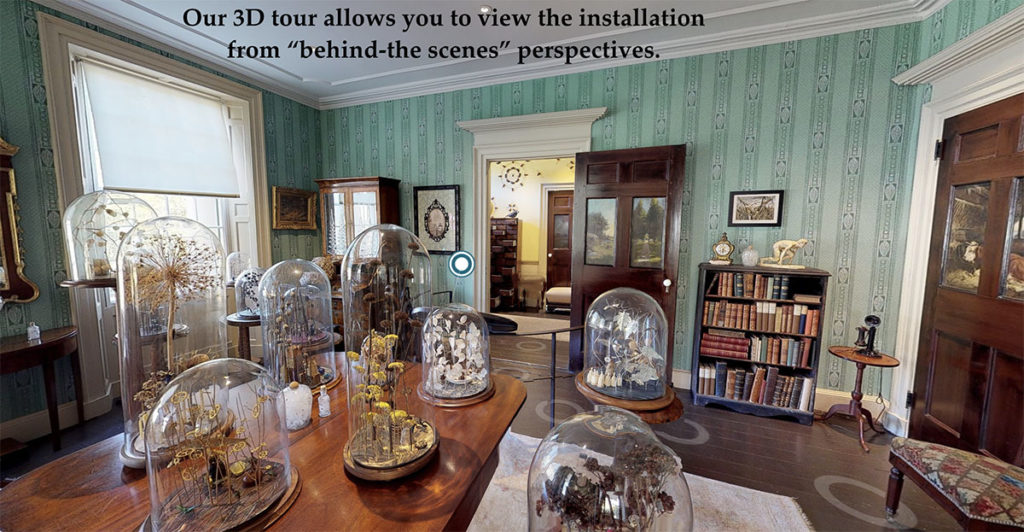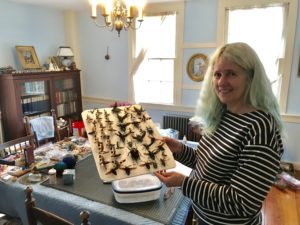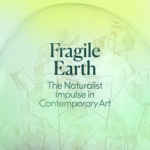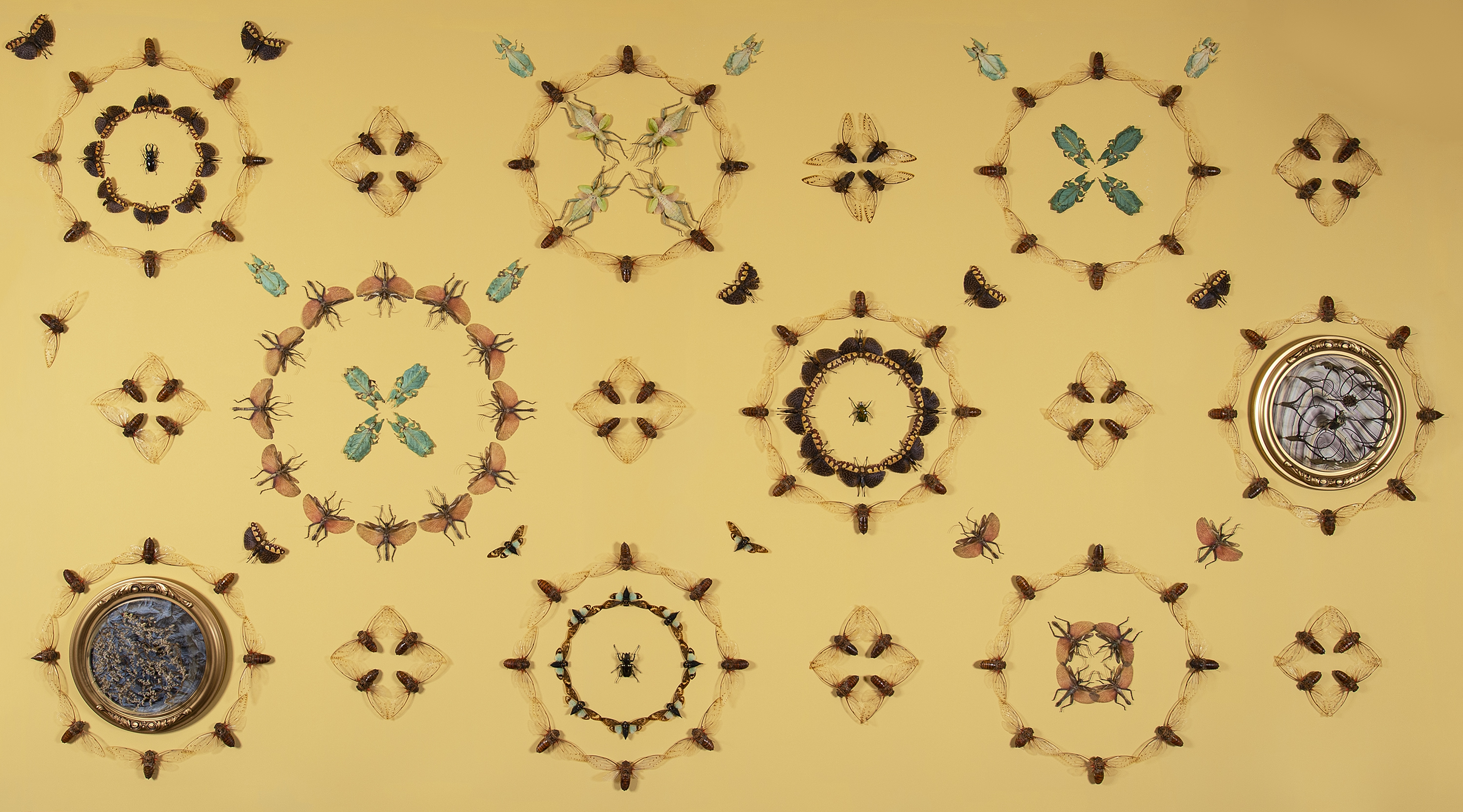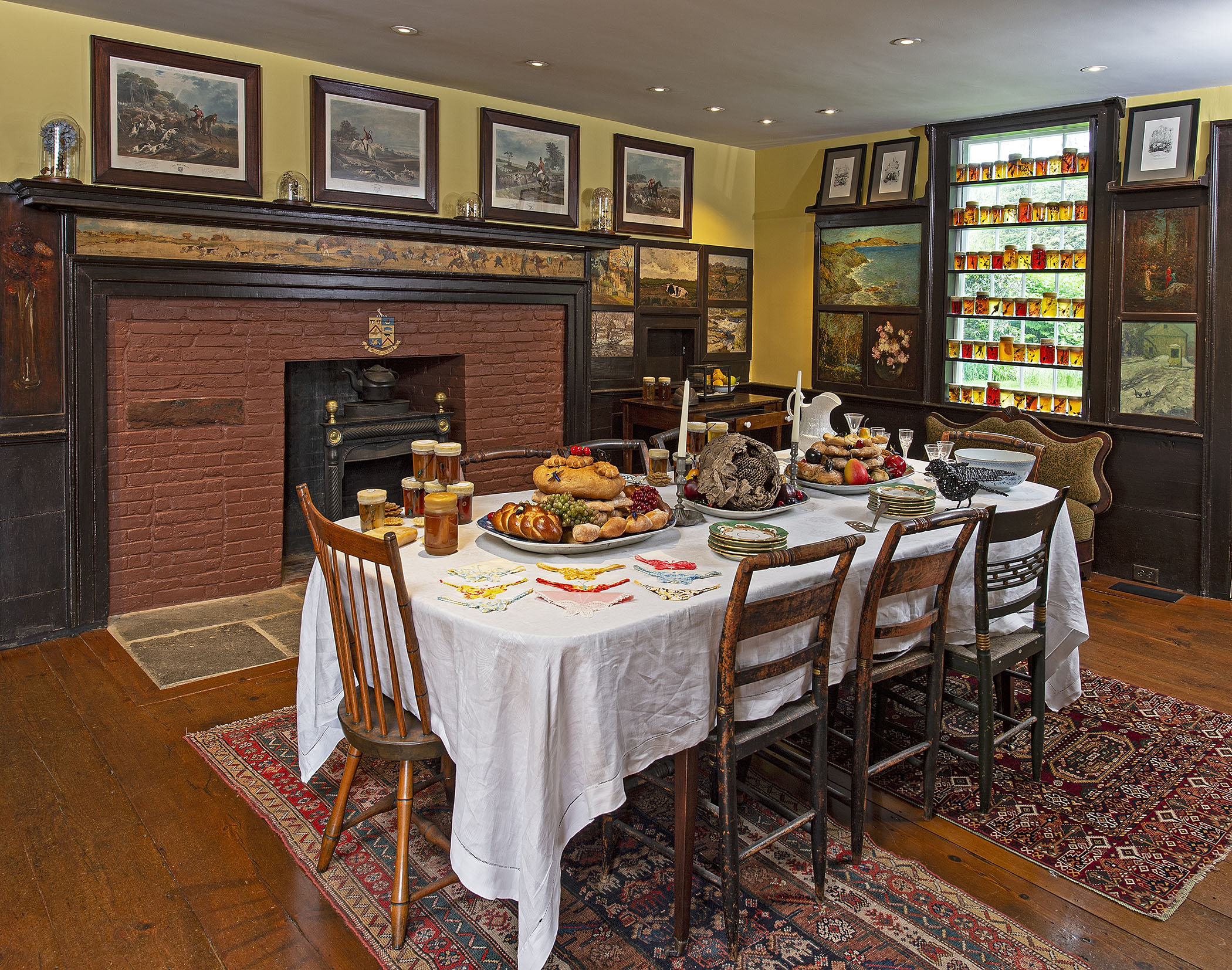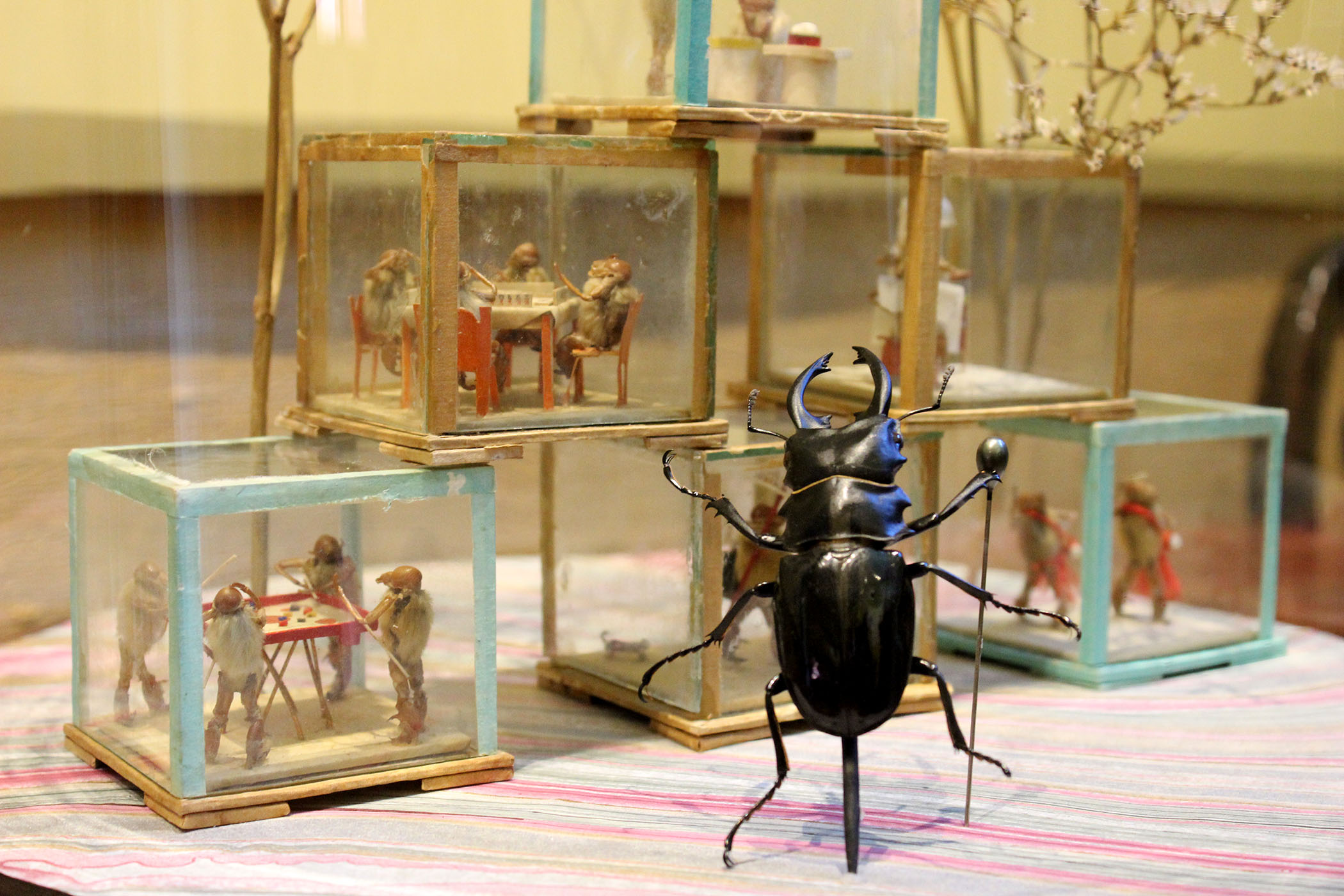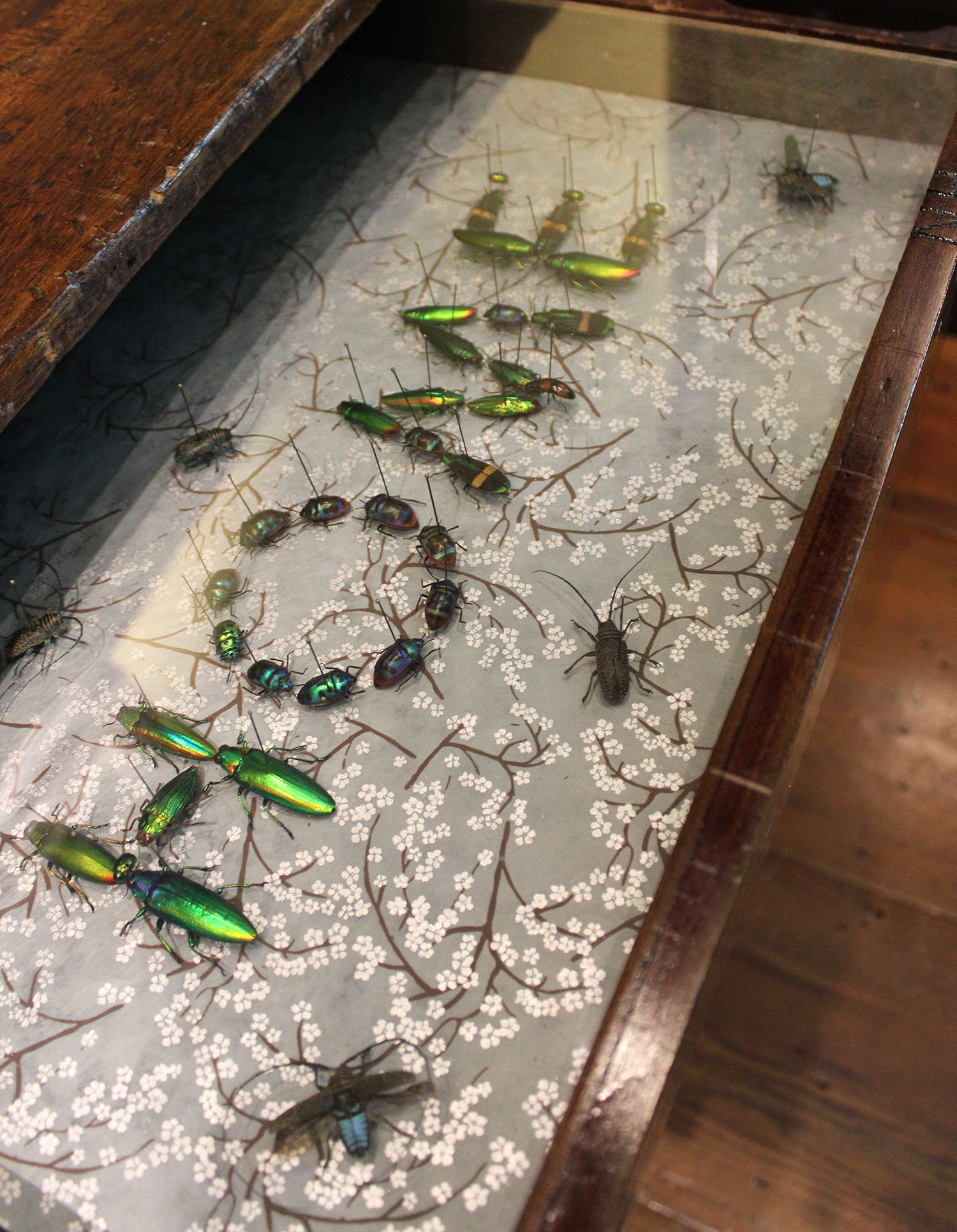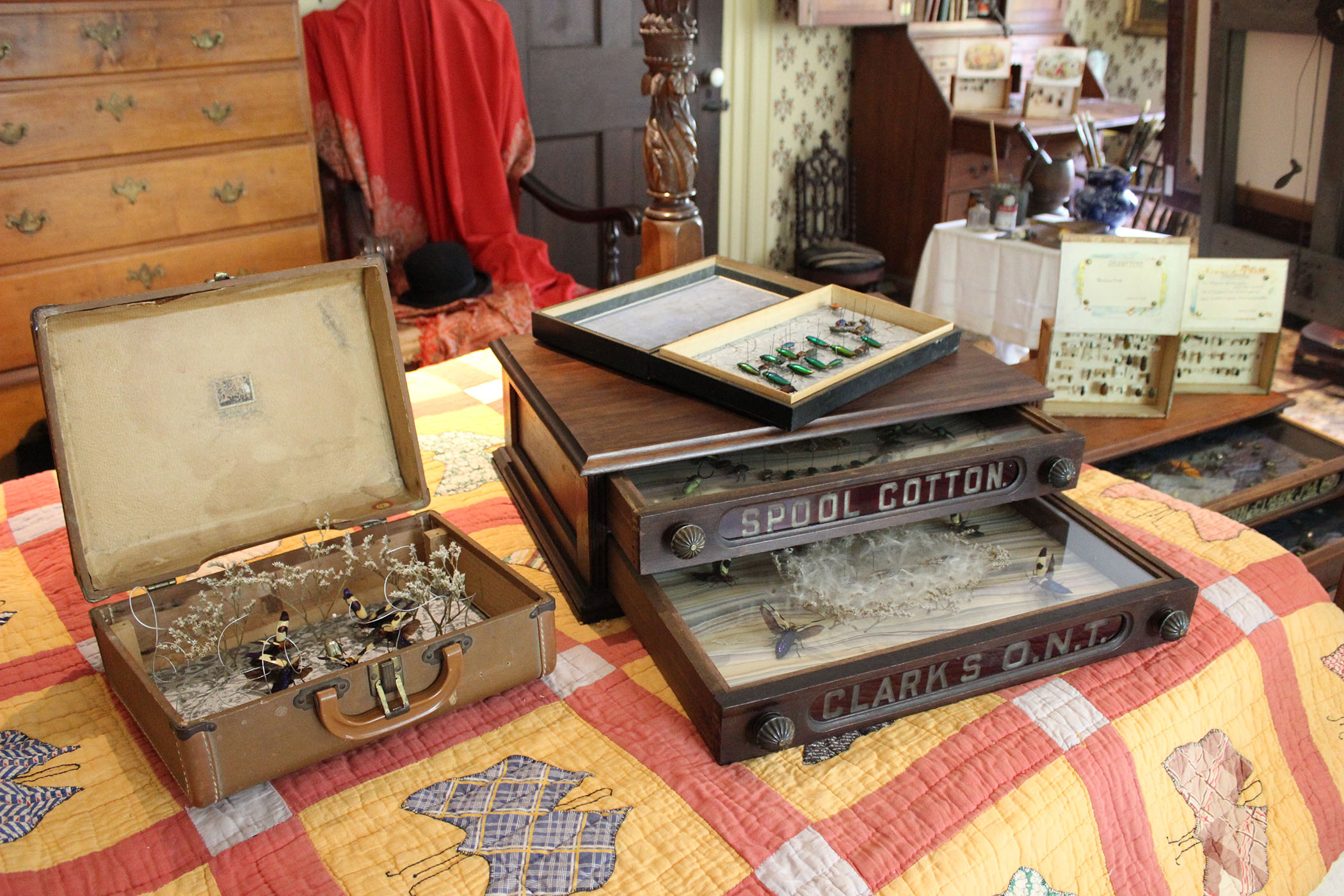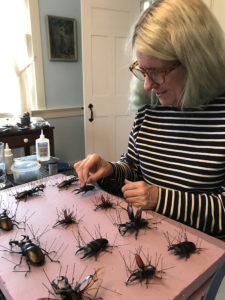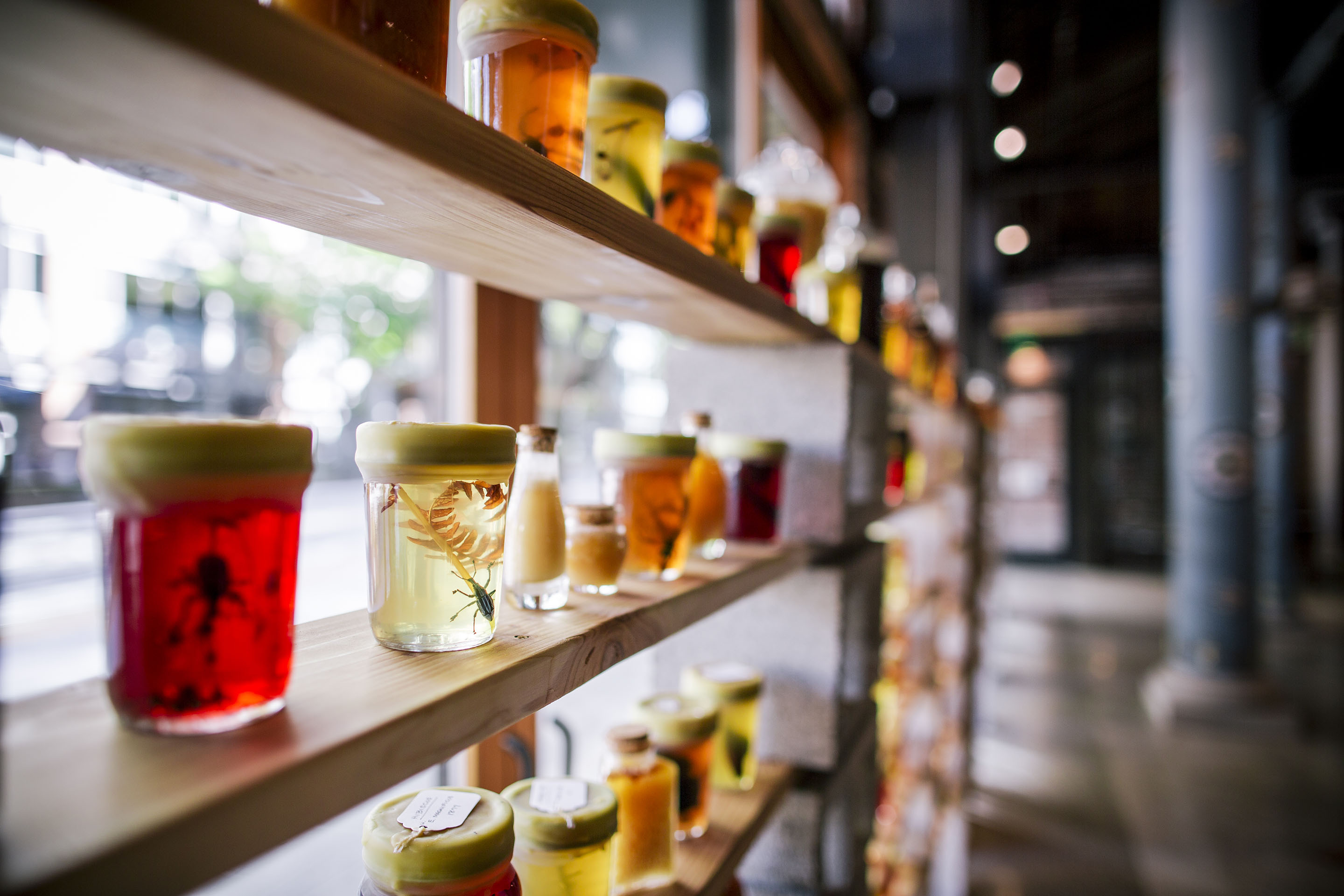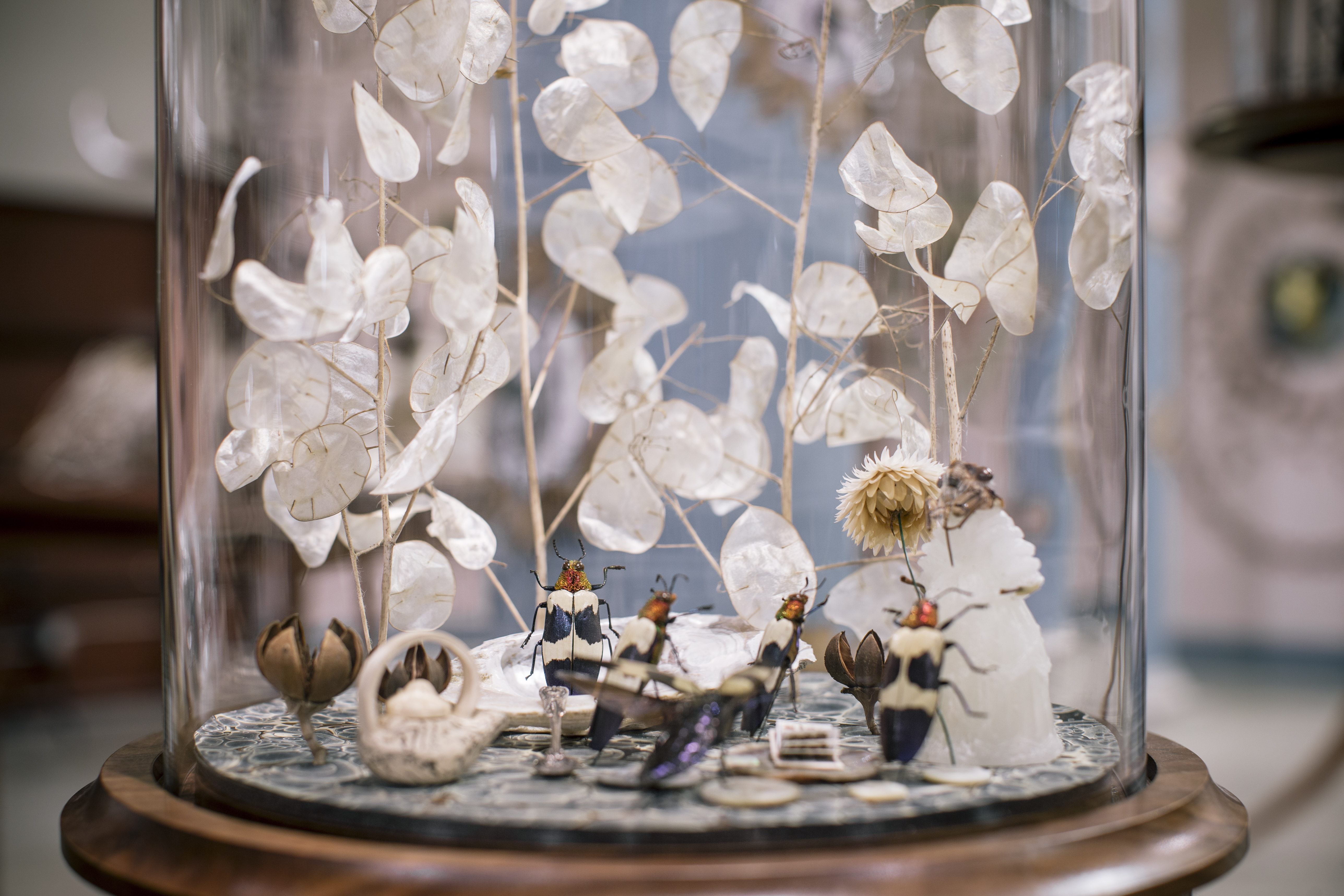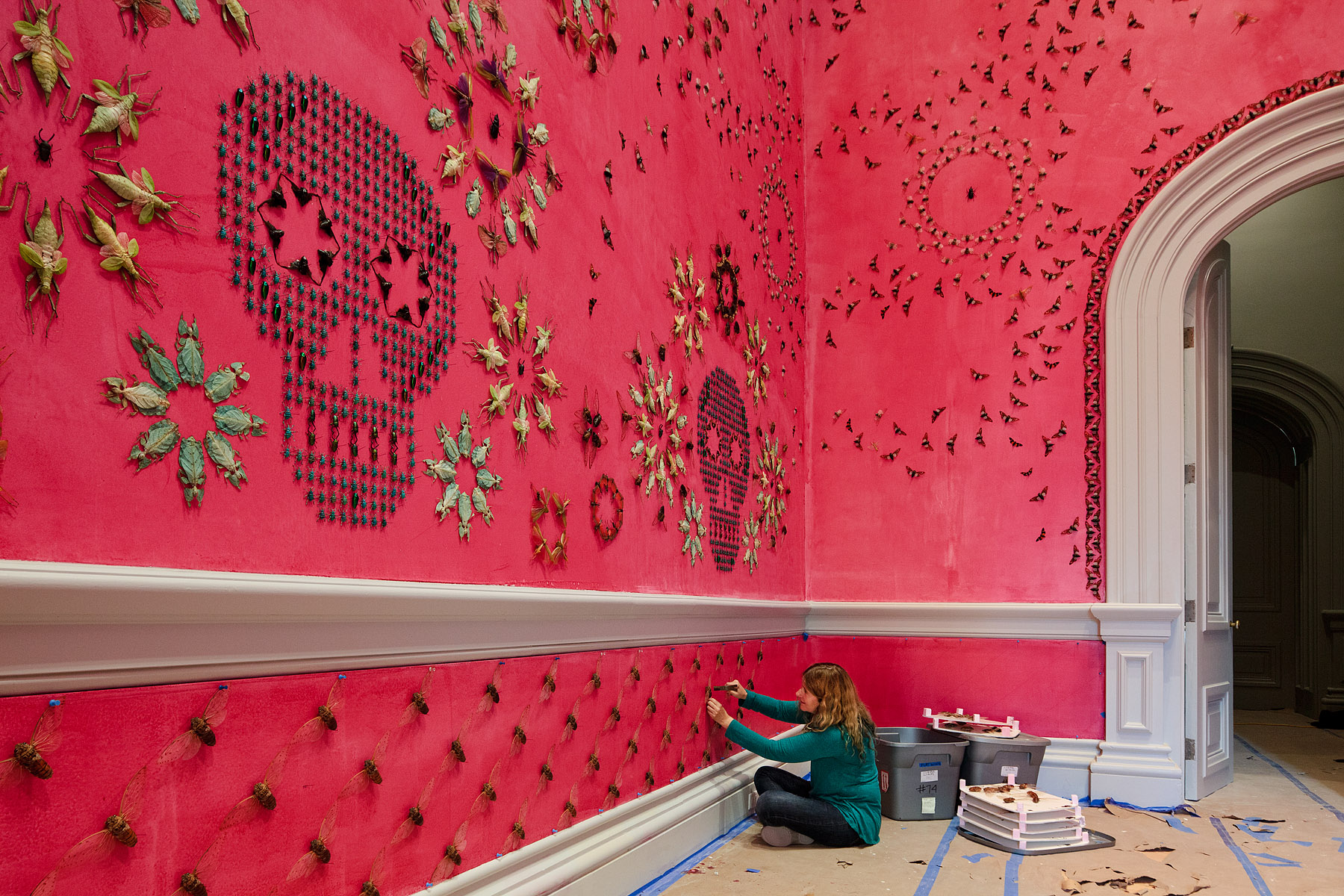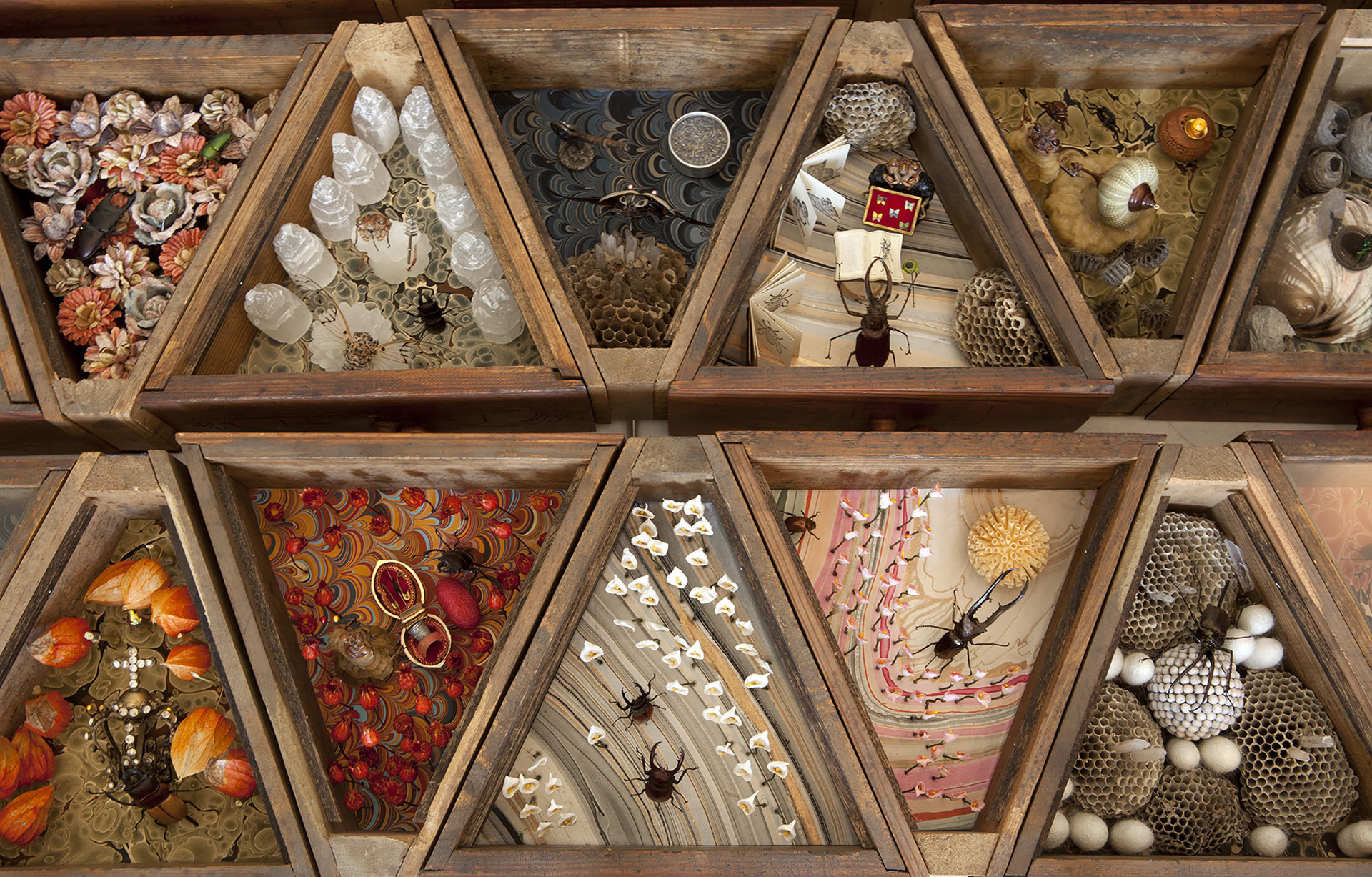March to June, 2019
Artist in Residence Jennifer Angus
- The Museum will be closed Sunday, April 9 in observance of Easter.
About the Artist's Work
Jennifer Angus (b. 1961) works with preserved insects as her medium, pinning them to walls in ornamental patterns reminiscent of textiles or wallpaper, and arranging them in poses under glass domes or in cabinet drawers. A Professor of Design Studies at the University of Wisconsin-Madison, Angus’s installations create surprising beauty while also informing audiences of insects’ importance to the ecosystem. They pollinate food crops, control parasites and predators, produce silk, dyes, and honey, and decompose matter back into the soil.
Like a historic artist-naturalist in the modern era, Angus collects her specimens in an ecologically sound manner, obtaining many from insect farms and reusing and repairing them over decades. She considers them “ambassadors for their species” working to raise awareness about the importance of preservation. While none of the species she uses are endangered, their forest habitats have been gravely diminished by humans. Inspired by history, Angus’s narrative fantasies open a window on this reality by encouraging viewers to reconsider their ideas about insects as well as our own consumption of natural resources. Angus aims to generate empathy by imposing order on the perceived chaos of nature—the conversion from “pest” to gem occurs through the power of design.

